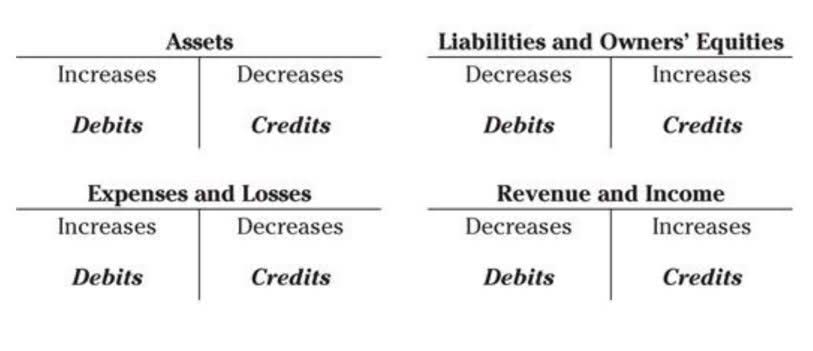Content

With an integrated ERP system, companies find that their transaction error rates decline, while many tasks that formerly required manual effort are now entirely automated. Also, subject to security issues, employees can access information in other departments that was previously difficult to obtain, or only with the help of special programming by the IT department. Explore our comprehensive solutions for all business processes across all industries to find the solutions you need to run your business better, faster, and simpler enterprise-wide.
This is also where tasks for cloud projects diverge from on-premises projects. Smaller cloud projects—especially hybrid efforts—receive approval even faster and with less justification, because they cost https://www.bookstime.com/articles/accounting-basics less and don’t require any capital expense. The following outlines five key steps and their supporting tasks that an organization should follow when moving ahead with an ERP implementation project.
Understanding Enterprise Resource Planning (ERP)
Cloud ERP solutions are also scalable, secure, adaptable, and quickly accessible — capabilities that are in high demand in an ever-changing business environment. ERP is a modular software system designed to integrate an organization’s business processes, such as accounting, HR, inventory management and purchasing, into a unified system. Separately, vendors in the 1970s — including two startups, SAP and Baan — began developing mainframe software for managing financial processes on a single database.

Employing change management principles throughout the ERP life cycle can prevent or reduce failures that compromise full implementation. An ERP system doesn’t always eliminate inefficiencies within a business or improve everything. The company might need to rethink how it’s organized or risk ending up with incompatible technology.
Choosing the Right ERP System
In addition, SAP helps customers seamlessly link operational data on business processes with experience data on emotional factors such as purchase experience and customer feedback. This enables companies to better understand and respond to their customers. Those tasks could include updating information on your website, transferring data between departments, and more. From there, MRP was the new standard until 1983, when manufacturing resource planning (MRP II) came onto the scene. Now, MRP II integrated manufacturing and production components — billing, scheduling, contact information — into one software for the first time.
Drop Ship (Purchased Items) – Items are purchased by the company, but shipped directly to the customer or another supplier. Customer Relationship Management (CRM) – Software that allows a company to capture, track and analyze customer interactions. Capacity Requirements Planning (CRP) – Calculating the production capacity needed to meet planned and actual demand. Bottleneck – A resource in a chain of resources whose limited capacity reduces the capacity of the whole chain.
Key components of an ERP system
One increasingly popular type of cloud ERP, multi-tenant software as a service, or SaaS ERP, is typically a streamlined version with fewer modules and features than the same vendor’s on-premises ERP. In multi-tenant SaaS, multiple “tenants” use the same copy, or instance, of the software. This scheme tends to enforce standardization and simplification, since the same software must serve customers with varying needs. It is the biggest reason SaaS ERP tends to have fewer modules than on-premises ERP.
Sales Order – A list of items or services a customer is authorizing you to provide on a defined date and price. Progress Payment – A payment the customer makes to the company before production is complete. Outsourcing – Use of other, third party organizations to perform tasks in place of an internal resource. Material Control – Process to assure enough (but not too much) material is available for production and sales.
Use our events finder to view upcoming and on-demand webinars, virtual events, and conferences. And it has never lost its pioneering spirit nor its determination to create trailblazing solutions that change people’s lives for the better. A strong marketing campaign can persuade people to sign up for email lists, try out demos, and ultimately make purchases from your business. So, for your ERP to be of any real value, you must pair it with marketing. With so much data coming from your site, it’s critical to maximize your web traffic. After all, the only way to obtain that data is for people to visit your site.
- This knowledge is then readily available to every appropriate employee on their mobile devices, including smartphones and tablets.
- The centralized database provides what’s known in IT as a “single source of truth” ensuring that every module has accurate, up-to-date information (see Figure 1).
- ERP of this kind are some of the earliest systems, which rose to prominence in the 1990s when the internet was just beginning to develop.
- Cloud-based ERP software also comes with availability, backup and disaster recovery guarantees that reduce interruptions to the software.
- Invite the steering committee, business partners, key business stakeholders, and others who were instrumental in orchestrating the project’s success.
- ERP applications also allow the different departments to communicate and share information more easily with the rest of the company.
- A database schema defines how data is organized within a relational database; this is inclusive of logical constraints such as, table names, fields, data types, and the relationships between these entities.
Our experienced Customer Success Managers (CSMs) help you reach your goals faster. Oracle CSMs assist new customers with implementation, go-live, consumption, and user adoption, and more. With deep product and business process backgrounds, CSMs help you get the most value out of your Oracle investment. Once the quantity of data and its definition are defined, erp defined this implementation task requires extraction, transformation, and load (ETL) skills covering data quality and normalization tasks. With complex data scenarios, instead of spending time and budget preparing everything in advance, consider using Oracle Enterprise Data Management Cloud to ensure consistency across enterprise data, even across disparate systems.
Definition of enterprise resource planning (ERP)
By the mid-1990s, as the web grew in popularity, client-server ERP was being retrofitted with web browser-like UIs. An ERP system is also likely to have a consistent look and feel across modules, unlike a collection of business management software from different vendors. ERPs are useful for businesses in every industry while MRPs are used by manufacturing companies that require resource management.
- Build database skills through courses within the IBM Cloud Professional Architect curriculum.
- Enterprise resource planning (ERP) is the integrated management of main business processes, often in real-time and mediated by software and technology.
- Schemas commonly use visual representations to communicate the architecture of the database, becoming the foundation for an organization’s data management discipline.
- Christian Klein leads the company, heads up the Executive Board of SAP SE, and, at 42, is the youngest CEO of any major enterprise on Germany’s DAX blue chip market index.
- Since 1998 he has worked for Visual South with roles in consulting, sales and executive management.
